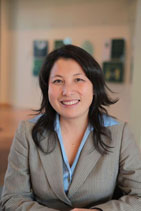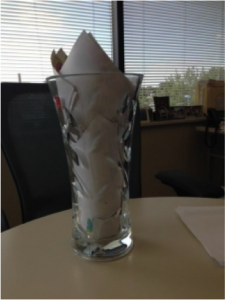 Think of change leadership as ‘stealth’ organizing.
Think of change leadership as ‘stealth’ organizing.
You know those great experiences when you meet someone for the first time and immediately the conversation feels natural, with common values and principles popping to the forefront in the first few sentences?
That is how I felt when I met with MayKao Hang, President and CEO of the Amherst Wilder Foundation, at the recommendation of another bold leader I recently interviewed.
By background we have little in common, other than we are both professional women who live in Minnesota. My family and roots are in Minnesota. MayKao’s roots are in Laos.
I was born into a bucolic state and middle class family, where opportunity was never really in question. MayKao was born in a war-torn country and spent a year in a refugee camp before her family was sponsored and brought to Minnesota.
Our starting points couldn’t have been more different, yet we immediately dove into a topic we are both passionate about: change leadership within organizations and impacting the community for the better. In this conversation we talked about eliminating disparities in education and employment opportunities. At Wilder, working on these issues is MayKao’s day job.
She is driving leadership and change inside the foundation and simultaneously strengthening Wilder programs and services for greater community impact. “I start with the premise that the status quo is never sufficient.” That is a classic “bold leader” comment.
Bold leaders, by definition, aren’t satisfied with whatever exits today. There is always more opportunity for improvement and impact.
“Think of it as ‘stealth’ organizing” came up when talking about her approach to uniting people, building capabilities and making the needed organizational changes: community organizing inside your operation.
For years I’ve dubbed this idea: build a positive conspiracy.
You don’t need everyone to start, but you do need a cadre of willing people with a shared vision and common approach to start influencing and help bring along others. MayKao calls this a “critical mass of early adopters.”
Several lessons about this approach to change leadership spilled out of the conversation including the ways MayKao models the behaviors herself:
- “I’m a learner.” This characteristic comes through her orientation to just start doing things. “It doesn’t have to be perfect, pick one or two things and start.” Trying and failing, and trying other approaches until you find the right path, is part of the progress journey.
- “Take away excuses to not do stuff.” MayKao means working with her staff one person at a time to eliminate roadblocks to organizational change. Taking away excuses is not without compassion or empathy which ties to another philosophy she demonstrates in her individual interactions: “I care a lot about how change happens and how people feel about it as it happens.”
- “I stopped talking about the ‘isms’ – rac-ism, sex-ism, any-isms.” This was one of the most interesting and impactful things she said to me. My takeaway is that when you allow phrases or labels to define the interaction, you limit thinking and you limit the conversation – in some cases you may shut it off completely. Not helpful if your goal is to drive successful change.
- “We need to redefine basic needs. It’s no longer food, water, shelter. Basic needs must include social, emotional and physical wellbeing.” As we closed, we landed on this notion of making sure employees are supported in this way. Certainly if you want to impact your community and create opportunities for children and families the base of Maslow’s Hierarchy is insufficient. One of the things I’ve been thinking about as a citizen and a business owner since this part of my conversation with MayKao is how do we (all) build effective organizations that are as she says, “net producers of community – not (only) users.”
 Now that is a bold set of ideas. Are her people with her?
Now that is a bold set of ideas. Are her people with her?
MayKao showed me a crystal vase that was given to her by some of her staff. To her surprise recently, more than 100 of her staff plus some of her board members showed up for her Doctorate in Public Administration Dissertation review. She did not expect a full audience, but all came to show their support.
The vase was stuffed with handwritten notes thanking her for her leadership, sharing personal stories of how her leadership has impacted individual lives, and cheering her forward.
How are you boldly leading change in your organization? Do you have a “stealth organization” in development? What would happen if you stopped talking about the “isms” or whatever holds your organization back and begin modeling the future you want?
I’d love to hear your stories, experiences, and questions. If you have other ideas to help build our collective understanding of what it takes to be a bold leader, send them my way!
